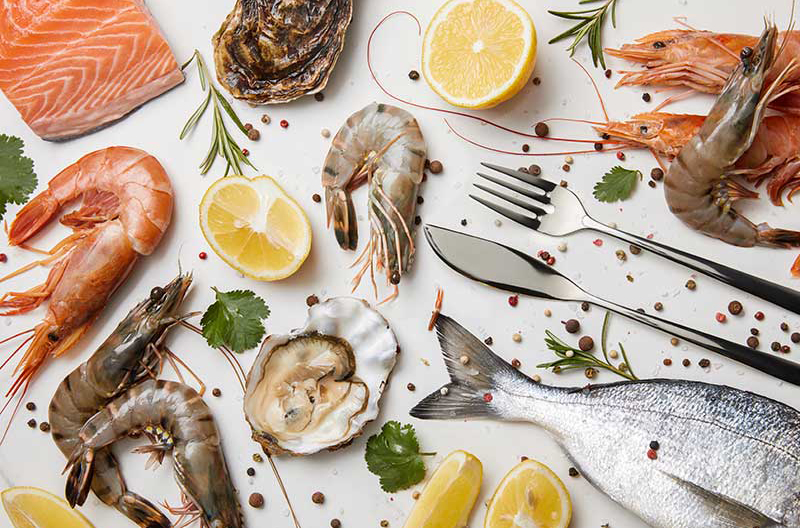Fresh seafood prices had just a small uptick in February versus February last year across all three merchandising zones, according to a monthly report by IRI, 210 Analytics and Elanco. Only fresh finfish had lingering inflation of 5.3 percent when compared to February 2022 pricing levels.
Over the latest 52 weeks, seafood prices increased 7.4 percent, which was far below the rate of inflation for total food and beverages, though when looking at finfish alone, the level was much higher. Frozen and shelf-stable seafood (cans and pouches) also had relatively mild inflation.
Fresh salmon price increases dropped to 8.1 percent in February, but prices were up 10.8 percent for the full-year view. Crab and lobster experienced deflation.
In frozen, price patterns were very different. Salmon and pollock price increases remained in the double digits, whereas frozen shrimp prices were actually down from year ago levels in February.
Lapping a full year of sales declines, fresh seafood scored a win in February with positive dollar and unit sales when compared to February 2022 levels. However, units trailed behind February 2020 levels, underscoring that while the market started to recover, it is not back to 2019 and early 2020 levels.
Shelf-stable seafood was the other area with dollar gains in Februar, and frozen matched last year’s levels in dollars and kept unit sales above pre-pandemic levels. In the 52-week view, shelf-stable is also the strongest performer year-on-year, with frozen holding on to most of the pandemic boost with units up 9.8 percent over 2019.
Ambient seafood sales have been growing since the fourth quarter of 2021. Growth peaked in the second quarter of 2022 and had since dwindled to 5.2 percent in January. In February, dollar sales growth rebounded sharply to a year-on-year increase of 8.2 percent. Canned seafood was one of the first items to spike during the early weeks of the pandemic and had a very strong performance throughout 2020, as consumers focused on having backup in their pantries and freezers.
In February, ambient tuna in cans and pouches reached $159 million in sales, which was a 9.7 percent year-on-year increase for the largest seller. On an annual basis, seafood cans and pouches reached $2.7 billion, a new record. Pounds were up in February by 2 percent and, in the 52-week look, pound sales are closing in on prior year levels as well.
The four February weeks showed consistent seafood sales, ranging from $121 million during the first week of February to $150 million, the week leading up to Super Bowl and Valentine’s Day.
To read more seafood news from The Shelby Report, click here.

